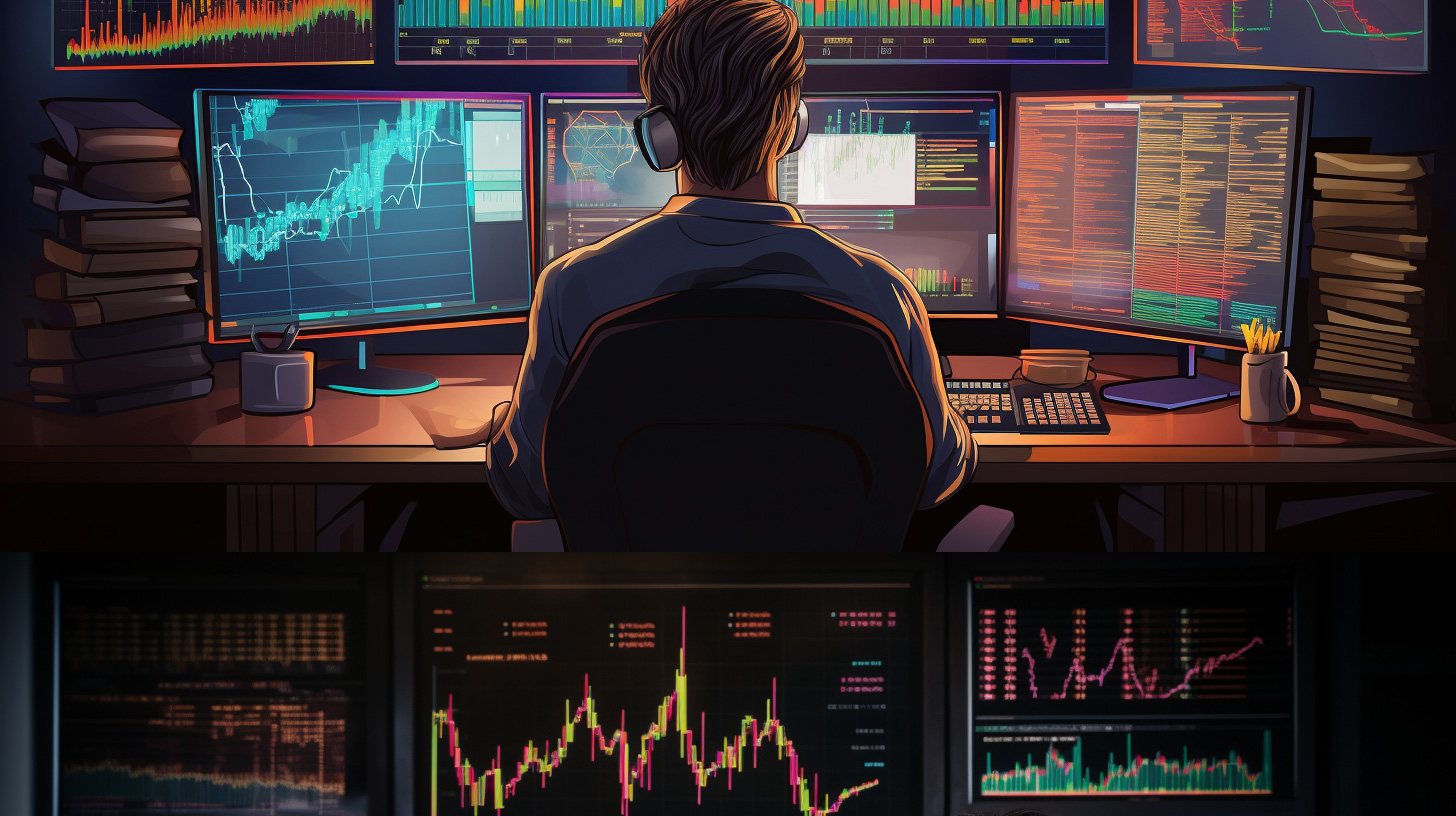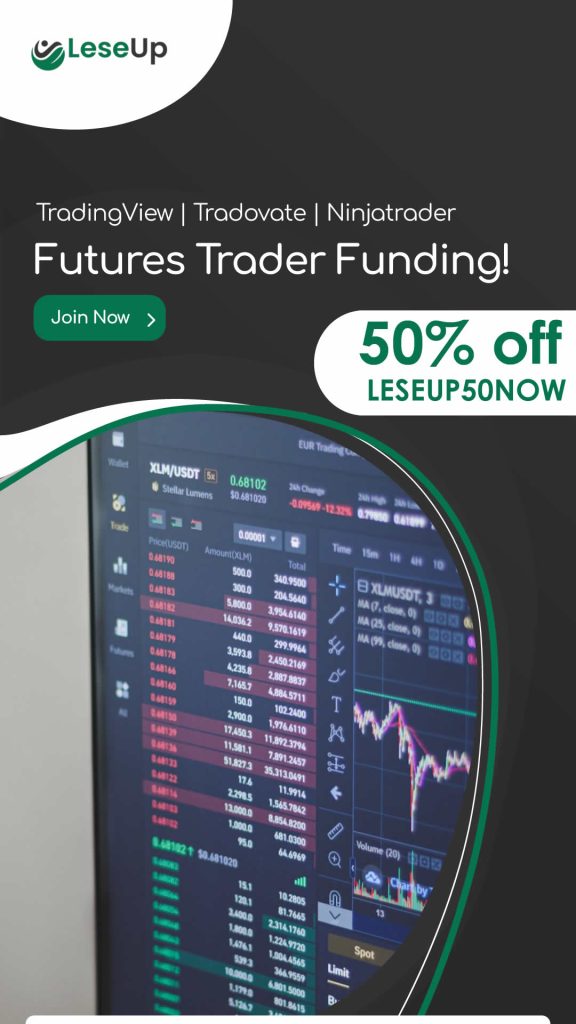A step-by-step guide for beginners on how to trade futures – this comprehensive article provides everything you need to understand futures trading from the ground up. Follow this guide to grasp the fundamentals, set up your trading account, implement strategies around risk management, utilize leverage effectively, and keep improving your approach. Futures trading offers immense opportunities but also poses risks if not navigated properly. Equip yourself with the knowledge to trade futures strategically and minimize risks as a beginner.
Trading futures can be complex for beginners, but this comprehensive guide provides the key steps to get started. From understanding basic terminology to setting up your account, implementing trading strategies, and managing risk, this article will equip you with the fundamental knowledge needed to succeed. Follow this step-by-step guide for beginners and learn how to trade futures strategically, while minimizing risk and maximizing returns. With the right preparation and continuous learning, futures markets can offer tremendous opportunities to informed traders looking to diversify their portfolios. Whether your goal is hedging, speculating, or portfolio diversification, these essential tips will help guide you in the world of futures trading.
Key Takeaways
- Grasp the fundamentals of futures trading
- Understand market trends and utilize research tools for informed decision-making
- Implement risk management and diversification strategies
- Learn to read and interpret futures trading charts for analyzing price movements and economic indicators
Understanding the Basics of Futures Trading
Grasping the fundamentals of futures trading requires an understanding of its unique terminology, the operation of futures markets, and the mechanics behind buying and selling contracts. At the heart of these trades are contract specifications, a critical aspect of understanding how futures work.
Futures terminology encompasses a variety of terms that facilitate communication between market participants. This includes concepts such as ‘long’ (buying a contract) and ‘short’ (selling a contract), ‘margin’ (the initial deposit required to enter into a contract), and ‘mark-to-market’ (daily settling of profits or losses). Understanding this jargon is essential to navigate through intricate trades successfully.
The operation of futures markets involves standardized exchanges where buyers and sellers can transact with confidence thanks to strict regulatory oversight. These markets function as arenas for price discovery, hedging against price risk, and speculation on future price movements.
Contract specifications detail the parameters within which a futures contract operates. They define elements such as the underlying asset (which can range from commodities like oil or gold to financial instruments like bonds or currencies), quantity, quality standards, delivery time, and location. This specification ensures uniformity across contracts for each type of asset traded on an exchange.
The Importance of Market Research in Futures Trading
In the complex realm of futures trading, understanding market trends is paramount. It offers traders insight into potential price movements and future investment opportunities.
The utilization of research tools aids in this comprehension. These tools provide accurate data analysis, predictive models, and real-time market information to support informed decision-making.
Furthermore, risk assessment strategies play a critical role in mitigating potential losses. Traders ensure that every trade executed has undergone careful scrutiny for maximum profitability and minimum exposure to risk.
Overall, a combination of understanding market trends, utilizing research tools, and implementing risk assessment strategies is essential for success in futures trading.
Understanding Market Trends
Understanding market trends is essential for beginners in futures trading, as it allows them to predict potential price movements and make informed decisions. Several factors influence these trends including market volatility and economic indicators.
Market volatility refers to the rate at which the price of a future increases or decreases for a set of returns. It represents the level of risk associated with the price changes of a security.
Economic indicators are statistical metrics used to measure the growth or contraction of an economy. They can be categorized into three types:
- Leading indicators: Predict future events.
- Lagging indicators: Confirm long-term trends.
- Coincident indicators: Occur in real-time and clarify the state of the economy.
Both market volatility and economic indicators contribute significantly to shaping market trends, enabling traders to strategize their investments accordingly.
Research Tools Utilization
Utilization of research tools plays a pivotal role in comprehending market trends, offering valuable insights through precise statistical analysis and data interpretation. These tools assist in generating an accurate prediction of future market movements, vital for sound investment decisions.
The process involves two key aspects: Tools Evaluation and Data Visualization.
Tools Evaluation pertains to the assessment of various analytical software and platforms based on their efficiency, functionality, ease of use, accuracy, and cost-efficiency.
Meanwhile, Data Visualization represents the graphical representation of complex financial data sets. It allows easy comprehension of voluminous data by transforming it into visual forms like graphs or charts.
Together, these elements provide a comprehensive understanding of market dynamics and facilitate successful futures trading strategies.
Risk Assessment Strategies
Risk assessment strategies serve as an integral component in the investment decision-making process, allowing for systematic identification and evaluation of potential market uncertainties to mitigate potential losses. For futures trading, these strategies are crucial due to the inherent volatility and high-risk nature of futures markets.
Three key risk assessment strategies include:
- Diversification: A well-diversified portfolio reduces exposure to any single commodity’s price fluctuations.
- Use of Stop-Loss Orders: This tool limits potential losses by automatically executing trades when prices reach predetermined levels.
- Hedging: Futures contracts can be used to offset potential losses in other investments.
These risk mitigation tactics aid in controlling futures volatility, providing investors with a framework for managing their portfolios amidst market uncertainty.
Setting Up Your Futures Trading Account
In the process of establishing a futures trading account, two key elements require careful consideration: the selection of a broker and the procedure for funding the account.
The choice of a broker plays a critical role in ensuring access to requisite platforms that align with investor goals, as well as providing essential support services such as market analysis tools and customer service.
Additionally, understanding the intricacies involved in the account funding process, including transfer options, timelines, and potential fees, is paramount to ensure seamless transactions and trading experiences.
Choosing a Broker
The selection of a reliable and suitable broker plays a pivotal role in successful futures trading. This warrants careful consideration of factors such as fees, customer service, and platform interface.
In terms of broker selection criteria, it is essential to conduct a fee structure comparison among different brokers. Scrutinizing commission rates, transaction fees, and margin costs is crucial in this regard.
Other valuable components to consider include the availability of educational resources for new traders. Look for comprehensive learning materials that cover futures trading basics.
Additionally, the effectiveness of the broker’s customer support should be taken into account. Consider their responsiveness and the quality of service provided.
Understanding these parameters facilitates informed decision-making in choosing a broker that harmonizes with individual requirements and objectives in futures trading.
Account Funding Process
Following the selection of a suitable broker, the account funding process becomes an integral part of initiating transactions within the marketplace. This involves depositing funds into the brokerage account to meet margin requirements, or the minimum amount set by brokers to open and maintain futures contracts. It is crucial to understand these requirements as they influence trading capacity and risk exposure.
Equally important are withdrawal procedures, which dictate how and when profits can be withdrawn from the account. Such processes should be clearly detailed by brokers, ensuring transparency for market participants.
A comprehensive understanding of both funding operations and withdrawal mechanisms forms a foundation for effective participation in futures trading.
Getting Started with a Funded Trading Account
One of the initial steps in venturing into futures trading is setting up a suitable trading account. For beginners seeking capital to start trading futures without an upfront deposit, funded trading accounts are a viable option. These accounts provide trading capital in exchange for a profit split. Check out the best funded trading accounts in 2023 to find a provider that matches your goals.
Strategies for Successful Futures Trading
Successful futures trading necessitates a thorough understanding and implementation of strategic approaches. The fundamental principles that form the bedrock of successful trading include Emotional Discipline, Trading Psychology, and methodical planning.
Emotional discipline refers to the ability to maintain composure in the face of market volatility. It is necessary for traders to remain calm and adhere strictly to their investment plans without being swayed by market fluctuations.
Trading psychology, on the other hand, involves having an analytical mindset towards market trends and potential risks. Traders must understand that losses are part of the process and avoid panic selling or hasty purchasing decisions based on fear or greed.
An effective futures trading strategy revolves around three key elements:
- Understanding market trends: This includes analyzing historical data, identifying patterns, and predicting future price movements.
- Risk management: This involves setting stop-loss orders to limit potential losses, and diversifying investments across different asset classes to spread risk.
- Consistent review: Continual analysis and adjustment of strategies based on market changes.
The complexity of futures markets requires traders not just to rely solely on technical analyses but also to consider macroeconomic indicators like inflation rates or GDP growth rates. Furthermore, it’s vital for traders to stay updated with global news events as they can greatly influence commodity prices.
Risk Management in Futures Trading
The development and execution of strategies for successful futures trading is a complex process, which necessitates an understanding of the various market factors that can influence price movements. However, in addition to these strategic considerations, it is also imperative to focus on risk management in futures trading.
Risk Management pertains to the identification, analysis, and mitigation of uncertainties in investment decisions. In the context of futures trading, it involves various tools and techniques designed to minimize potential losses. One such technique is hedging.
Hedging techniques are commonly employed by traders as a means to mitigate risks associated with adverse price movements. These techniques involve taking offsetting positions in the market—in other words, making trades that will yield gains if existing trades result in losses—thereby limiting potential financial damage from unfavorable market changes.
Margin requirements also play a critical role in risk management within futures trading. A margin requirement represents the minimum amount of money that must be maintained in a trader’s account as collateral for their open positions. By imposing margin requirements, regulatory authorities aim to ensure traders have sufficient capital at hand to cover potential losses from their open positions—a key factor contributing toward maintaining financial stability within markets.
Reading and Interpreting Futures Trading Charts
In the realm of futures trading, comprehension of chart basics emerges as a fundamental skill set, facilitating informed decision-making.
The subsequent ability to analyze price movements allows traders to discern market trends and predict potential shifts in value with greater accuracy.
Additionally, proficiency in recognizing chart patterns provides an essential tool for identifying recurring trends and signals, thereby enabling more strategic trading choices in the complex financial market landscape.
Understanding Chart Basics
Understanding chart basics involves recognizing patterns, interpreting indicators, and analyzing price movements to predict future trends in the futures market.
Two essential components are Chart Scaling and Timeframes Selection.
Chart Scaling relates directly to the perception of market volatility and trend identification; it can be linear or logarithmic based on percentage changes rather than absolute ones.
In contrast, Timeframes Selection is about choosing appropriate periods for analysis—daily, weekly, monthly—to align with trading goals. For example, short-term traders may use hourly charts while long-term investors might prefer yearly charts.
Both elements require careful handling as they significantly influence analytical outcomes and subsequently decision-making processes in futures trading.
Analyzing Price Movements
Analyzing price movements involves meticulous scrutiny of historical and real-time data to predict potential trends in the market. Price volatility, a critical aspect of this analysis, refers to the rate at which prices increase or decrease for a set of returns. High volatility signifies that a security’s value can drastically change within a short period, making it possible but risky for trading opportunities.
Understanding economic indicators is equally significant as these markers provide insights into the current and future state of an economy. Factors such as GDP growth rates, employment statistics, and consumer price indices among others affect market sentiment leading to shifts in demand-supply dynamics. Therefore, prudent comprehension of these variables aids in predicting potential price movements in futures trading.
Recognizing Chart Patterns
Recognizing chart patterns, an integral aspect of technical analysis can provide substantial insights into predicting and interpreting potential price movements in the financial market. Chart types play a pivotal role in this process, with each type offering unique viewpoints of market trends.
Pattern Significance
Head and Shoulders Indicates potential trend reversals
Double Tops/Bottoms Suggest an imminent bullish or bearish move
Triangles Depicts consolidation before a breakout
Pattern significance is dictated by both past performance and the likelihood of future outcomes. These patterns offer traders key insights into when to enter or exit trades to maximize profitability. Clarity in understanding these concepts equips those trading futures with the necessary tools for success.
The Role of Brokers in Futures Trading
In futures trading, brokers play an integral role by providing platforms for transactions, offering advice based on market analysis, and facilitating the execution of trades. They act as intermediaries between buyers and sellers in the futures market, ensuring smooth operations while adhering to broker regulations.
Broker regulations are a set of rules that govern their activities to protect investors from fraudulent practices. Regulatory bodies such as the Commodity Futures Trading Commission (CFTC) in the U.S., enforce these regulations. Brokers must maintain transparency in their dealings by providing accurate information about contracts and terms of trade. Additionally, they are required to maintain adequate capital reserves to mitigate potential losses.
Clearing houses play an equally critical role in futures trading. A clearing house is a financial institution that facilitates settlement of trades between parties involved in a transaction. It acts as an intermediary between the buyer and seller, assuming the risk associated with contract default thereby providing stability within the market.
The interaction between brokers and clearing houses is essential for maintaining integrity within futures markets. Once a trade order has been placed through a broker’s platform, it is forwarded to a clearing house which ensures its fulfillment by matching it with opposite orders.
Thus, both entities ensure the efficient functioning of futures markets: brokers facilitate access for individual traders while adhering to stringent regulatory standards; clearing houses provide stability by mitigating counterparty risks related to contract defaults — forming an intricate web that supports robust financial transactions within this sphere of trading.
Effective Use of Leverage in Futures Trading
Having explored the role of brokers in futures trading, it is pertinent to delve into another critical aspect – the effective use of leverage. Leverage, a powerful tool in futures trading, can enhance profitability but also pose significant risks if not utilized appropriately.
Leverage refers to the ability to control large dollar amounts of a commodity with a comparatively small level of capital. It essentially amplifies both potential profits and losses. While this feature makes futures trading attractive, it simultaneously opens traders to considerable leverage pitfalls.
The primary pitfall is that leverage can lead to substantial losses as quickly as it can yield returns. If market movements go against one’s position, losses can exceed initial investments. Consequently, understanding and managing margin requirements become paramount.
Margin requirements are set by exchanges and enforced by brokers. They represent the minimum amount needed in an account to initiate or maintain a futures position. The two types include:
- Initial Margin: The upfront payment required before entering into a futures contract.
- Maintenance Margin: A lower amount than the initial margin which must be maintained in an account at all times.
When market fluctuations cause account equity to fall below the maintenance margin level, brokers issue a margin call demanding additional funds.
In summary:
- Leverage magnifies gains but equally increases exposure to losses
- Understanding margin requirements is crucial for leveraging effectively and mitigating risk
Keeping up With Changes in the Futures Market
Staying abreast of changes in the futures market is a crucial aspect that influences decision-making and contributes significantly to potential profitability. Market volatility, characterized by rapid and significant price movements, can present both potential risks and opportunities in futures trading. By closely monitoring these fluctuations, traders can make informed decisions about when to enter or exit trades.
Understanding the fundamentals that drive market volatility is essential. These may include economic indicators, geopolitical events, or changes in supply and demand dynamics. Furthermore, technological advancements have introduced algorithmic trading which also impacts price actions due to high-frequency trades.
To mitigate the risks associated with market volatility, diversification strategies are often employed. This involves spreading investments across various futures contracts instead of concentrating on a single one. Such an approach can potentially reduce exposure to any one commodity’s price swings while providing opportunities for returns from different sectors.
Moreover, keeping up with regulatory changes in the futures markets is equally important as they may impact trading operations directly or indirectly. For instance, changes in margin requirements could affect how much capital is needed for trading positions.
Lastly, continuous education plays a pivotal role in staying updated with market changes. Multiple resources are available – from financial news outlets and research reports to webinars and online courses – all aimed at enhancing understanding of the intricacies involved.
Review and Improve Your Futures Trading Plan
Regular review and improvement of one’s approach to market participation is essential in ensuring optimal outcomes within the dynamic context of futures trading. This necessitates a willingness to make plan adjustments based on a rigorous analysis of past performance data, current market conditions, and future projections.
A critical element in this continuous improvement process is understanding and managing trading psychology. Emotional responses can significantly impact decision-making processes, often leading to sub-optimal choices that undermine profitability. Recognizing emotional triggers and developing strategies to manage them effectively are fundamental measures in maintaining objective judgment when executing trades.
Plan adjustments should be grounded on empirical evidence rather than instinct or emotion. This involves the careful scrutiny of trade outcomes against set benchmarks over specific periods. Such an evaluation will highlight areas requiring refinement and provide insights into successful strategies that could be replicated or scaled up.
Moreover, monitoring broader economic trends and staying abreast with changes in market regulations are invaluable for timely plan adjustments. For instance, shifts in monetary policy can influence interest rates which subsequently affect futures prices. Therefore, incorporating such macroeconomic factors into one’s trading plan enhances its robustness.
Frequently Asked Questions
What Are the Tax Implications of Futures Trading?
The tax implications of futures trading involve complexities that necessitate strategic planning.
These strategies can include both short-term and long-term capital gains taxes, depending on the length of the contract.
Furthermore, deduction opportunities exist in this realm, such as expenses related to research or investment advice.
Understanding these tax dynamics is crucial for successful futures trading and optimal financial outcomes.
It is advised to consult with a tax professional to navigate these intricacies effectively.
How Can I Integrate Futures Trading Into a Broader Investment Portfolio?
Integrating futures trading into a broader investment portfolio can be achieved through careful strategies such as portfolio diversification and risk management.
Futures, due to their inherent leverage, offer the potential for substantial returns while also posing significant risks.
To mitigate these risks, diversification across various asset classes is essential.
Furthermore, effective risk management techniques, including position sizing and the use of stop-loss orders, can help control potential losses from futures trading within an investment portfolio.
Are There Specific Software or Tools Recommended for Futures Trading?
In futures trading, software selection plays a crucial role. Several platforms are recommended due to their advanced features and platform compatibility. These include Interactive Brokers, TD Ameritrade’s Thinkorswim, and ETRADE’s Power ETRADE platform.
They offer real-time data, customizable charts, speed of execution – vital for quick market movements – and educational resources.
However, the choice ultimately depends on individual requirements such as budget constraints, user interface preferences, and specific tool needs.
How Much Time Should I Dedicate Daily to Successfully Trade Futures?
The time investment required for successful futures trading varies tremendously depending on individual strategies and goals. Effective Time Management Techniques and Psychological Preparation are crucial.
It includes dedicated periods for market research, strategy development, actual trading, and performance review. A significant commitment of daily hours is often necessary; however, the precise amount can be highly personalized based on each trader’s specific circumstances and objectives in the financial markets.
Can I Engage in Futures Trading as a Part-Time Activity While Maintaining a Full-Time Job?
Engaging in futures trading part-time while maintaining a full-time job is feasible, provided careful risk management and effective trading strategies are employed. This endeavor requires substantial dedication to market analysis and understanding of financial instruments.
However, the flexibility inherent in futures markets affords participants the ability to trade outside traditional market hours, accommodating those with existing employment commitments.
Nonetheless, it’s crucial to acknowledge that successful trading demands significant time investment for strategy development and continual learning.
Succeeding in Futures Trading
To summarize, thriving in the complex world of futures trading requires dedication and strategic preparation. Conducting diligent market research, carefully selecting a broker, implementing risk management tactics, and continually reviewing and adapting your overall trading plan are fundamental steps for beginners.
While futures markets inherently involve substantial risks, they also present tremendous opportunities for informed traders. By cultivating a deep understanding of market dynamics, exercising emotional discipline, and employing the right trading psychology, returns can be maximized while minimizing potential downsides. Start implementing the knowledge from this comprehensive guide and equip yourself to navigate futures markets as a beginner.
The journey may be challenging initially but a commitment to continuous learning and improvement will empower you to trade futures successfully over the long term. Approach this sphere strategically, manage risks prudently, and keep your trading plan flexible to align with evolving market conditions. With an analytical mindset and the fundamental skills acquired through this guide, your futures trading endeavors can yield significant rewards.






